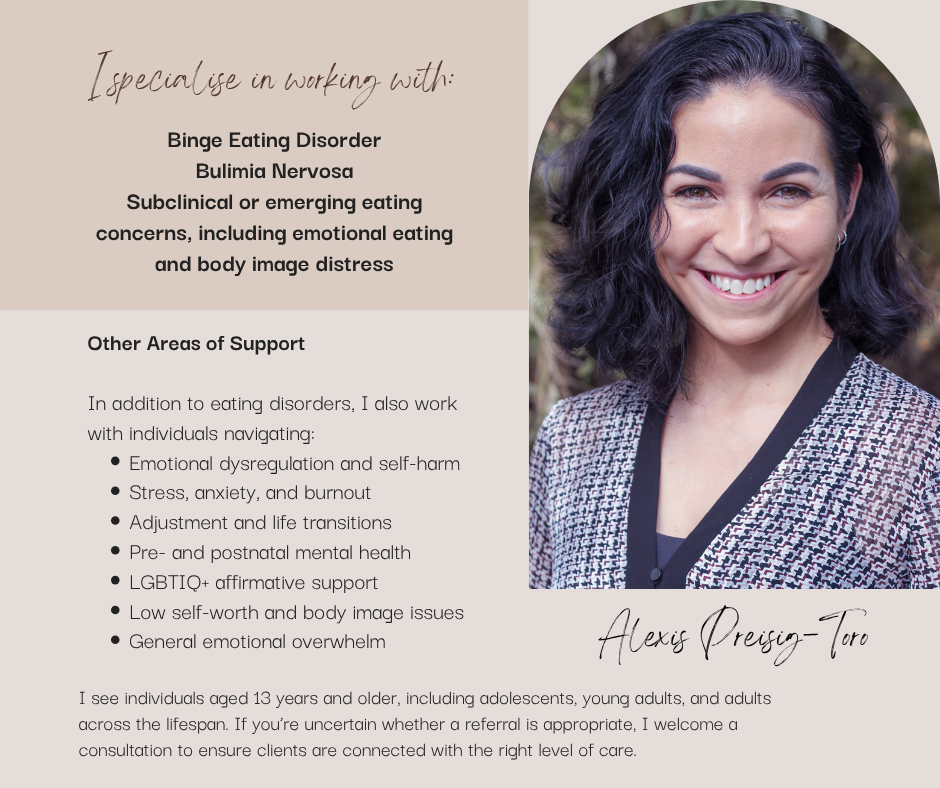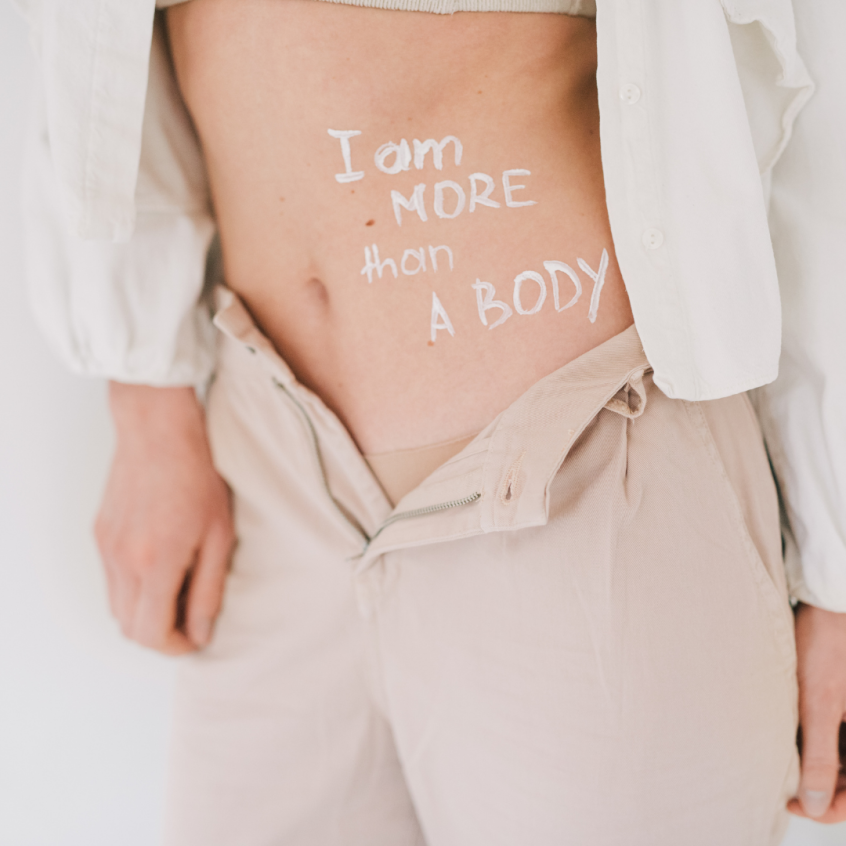When most people think of an eating disorder, they often picture a thin, young, white woman. But this stereotype is not only outdated—it’s harmful. The majority of people struggling with eating disorders don’t fit this image. Further, the mortality rate for people with eating disorders is up to six times higher than that for people without eating disorders. The increased risk of premature death exists for all types of eating disorders.
I am a registered General Psychologist with the Australian Health Practitioners Regulation Agency and a Credentialed Eating Disorder Clinician (CEDC-MH). I have experience working in private practice and correctional settings, treating adolescents and adults with a wide range of mental health concerns. Having worked in the fitness industry for years, my strengths lie in motivating people and understanding the relationship between psychological and physical well-being.
At Zest Infusion, I specialise in supporting individuals living with binge eating disorder (BED) and bulimia nervosa—two of the most common, yet frequently misunderstood eating disorders. These conditions often go unrecognised because they don’t always involve weight loss or meet the “typical” image of an eating disorder.
The Real Face of Binge Eating and Bulimia Nervosa

Binge eating and bulimia both involve episodes of eating large amounts of food, often rapidly and in secret, followed by deep emotional distress.
In bulimia nervosa, this distress may lead to compensatory behaviours such as vomiting, laxative use, or compulsive exercise.
In binge eating disorder, these behaviours are absent, but the emotional impact can be just as profound.
Many clients live in average or larger bodies. As a result, their distress is often missed, even by well-intentioned professionals who mistakenly associate eating disorders only with thinness.
According to the National Eating Disorder Collaboration (2025), of people with an eating disorder, 3% have anorexia nervosa, 12% bulimia nervosa, 47% binge eating disorder (BED) and 38% other eating disorders.
My Therapeutic Approach
I offer a non-diet, weight-inclusive, and trauma-informed approach that honours each person’s story and focuses on sustainable healing.
My work draws from several evidence-based modalities:
Cognitive Behavioural Therapy – Enhanced (CBT-E)
Recognised as the gold standard for treating bulimia nervosa and BED.
Dialectical Behaviour Therapy (DBT)
Supports the development of emotional regulation and distress tolerance.
Acceptance and Commitment Therapy (ACT)
Encourages clients to live in alignment with their values—even when facing difficult emotions.
Compassion-Focused Therapy (CFT)
Helps reduce the shame and self-criticism that often accompany disordered eating.
The RAVES Approach
A food-based, structured method that supports regular eating, honours hunger and fullness, and reduces dietary chaos.

At Zest Infusion, I have the privilege of working closely with Christina Mailer, an Accredited Practising Dietitian (APD) & Nutritionist. Together, we form an integral part of our collaborative multi-disciplinary team care approach, providing comprehensive support to our clients. My role involves collaborating with dietitians and referring GPs to ensure consistent and wrap-around care for each individual. I prioritise transparent communication and timely feedback, as I believe they are essential in supporting our clients’ well-being across medical, nutritional, and psychological domains.
Who I Work With

I do not currently accept referrals for
- Anorexia nervosa
- High medical-risk restrictive eating disorders
- Clients requiring inpatient or intensive multidisciplinary care
A Final Word
Eating disorders don’t have a “look”—but they do have a voice. That voice deserves to be heard.
If you are a GP, allied health professional, or potential client seeking specialised and compassionate support, I invite you to reach out.
Share this Post

